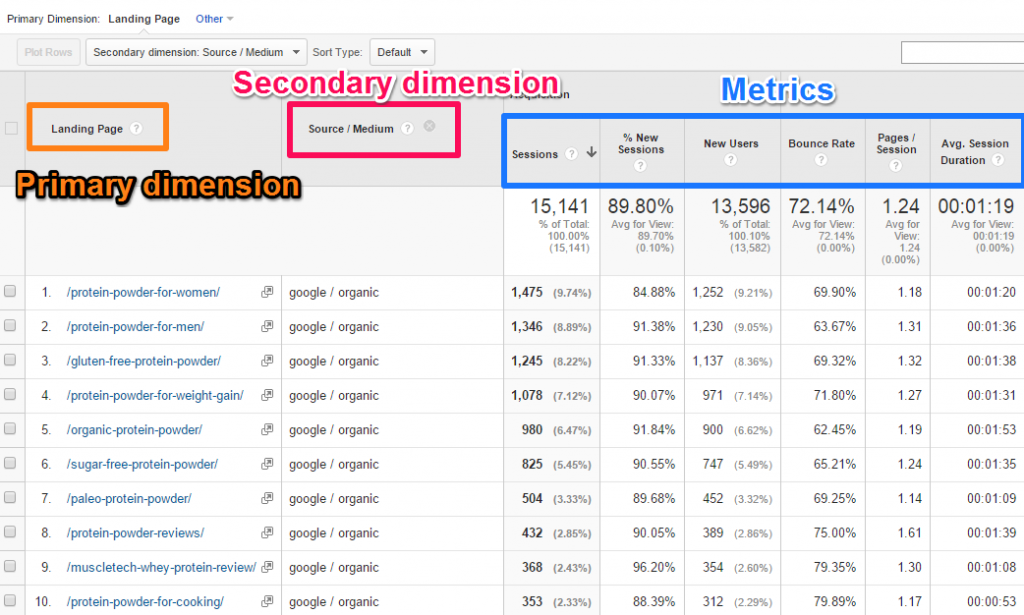A Comprehensive Guide to 'Secondary Dimensions' in Google Analytics: Insights Revealed
Wiki Article
Browsing the Midst of Additional Dimension in Google Analytics: A Comprehensive Exploration on Its Performance
In the realm of digital analytics, the intricacies of information interpretation commonly hold the trick to unlocking important insights. Within the large toolkit of Google Analytics exists an attribute that works as a concealed treasure for those that look for a deeper understanding of user actions and website performance. Second measurements, though apparently uncomplicated at very first glimpse, harbor a riches of untapped prospective waiting to be taken advantage of. As we start this trip to check out the nuanced performance of additional dimensions, we will reveal how this attribute can illuminate patterns, introduce connections, and inevitably pave the way for notified decision-making in the digital landscape.Understanding Second Dimensions in Google Analytics

Comprehending just how secondary measurements job is essential for leveraging the full power of Google Analytics. These measurements assist you address more intricate concerns about user actions and the efficiency of your website material and advertising and marketing efforts. You can use additional measurements to evaluate which internet browsers or gadgets are most typically used by visitors who make an acquisition, or to contrast the bounce rates of different website traffic sources. By combining main metrics with additional dimensions, you can acquire important insights that drive educated decision-making and optimization techniques - what is a “secondary dimension” in google analytics?.
Leveraging Second Measurements for Information Analysis
Building upon the fundamental understanding of exactly how second dimensions improve data evaluation in Google Analytics, the usage of these added layers of info becomes critical in drawing out useful insights for notified decision-making and optimization methods. By leveraging additional measurements, analysts can delve deeper into the performance metrics by including even more context to the main measurements, therefore revealing concealed patterns and correlations that could not be noticeable initially look. This much deeper degree of analysis makes it possible for companies to much better comprehend individual behavior, recognize patterns, and determine areas for renovation.
Additionally, additional measurements provide an even more detailed view of the data, permitting segmentation based upon various specifications such as demographics, gadgets, website traffic sources, and much more. This segmentation facilitates a much more granular evaluation, enabling businesses to customize their campaigns and methods to particular target market sections for enhanced targeting and personalization. Essentially, the critical usage of secondary dimensions encourages organizations to make data-driven choices that drive growth and success in the digital landscape.
Advanced Methods for Additional Measurement Application
Checking out complex approaches to harness the full capacity of additional measurements in Google Analytics elevates the depth and sophistication of data evaluation for strategic decision-making. One advanced method for implementing second dimensions is the usage of customized measurements. In addition, integrating second dimensions with sophisticated segments can offer also extra granular insights by using several layers of segmentation to the information.Interpreting Insights Through Secondary Dimensions
When interpreting insights through additional measurements, it is essential to consider the context of the data and how various dimensions interact with each other. Understanding which particular traffic resources lead to higher conversion prices or determining which devices individuals like for making acquisitions can give workable insights for optimizing advertising campaigns and improving overall web site efficiency. By carefully checking out the information with secondary dimensions in mind, businesses can make enlightened choices that drive significant outcomes and improve their electronic visibility.
Maximizing Efficiency With Additional Measurements

One crucial way to optimize performance with secondary dimensions is by segmenting data extra granularly. This enables you to isolate particular factors that may be influencing your metrics and acquire a better understanding of what drives success or failure in your digital initiatives. By integrating additional dimensions such as 'tool group' and 'landing page,' you can pinpoint which gadget kinds are most effective for specific landing web pages, enabling you to customize your methods accordingly.
Additionally, using additional measurements can assist you recognize trends, patterns, and connections that may not appear when assessing data with key dimensions alone. This deeper degree of evaluation can lead to even more educated decision-making and eventually boost the total performance of your website or digital advertising and marketing campaigns.
Conclusion
In final thought, additional measurements in Google Analytics play an look at this website important duty in improving data evaluation Learn More and providing much deeper insights right into web site performance. By utilizing sophisticated strategies and interpreting the data successfully, organizations can enhance their methods and boost total performance. Understanding the functionality of secondary dimensions is crucial for making notified choices and driving success in the digital landscape.By leveraging second dimensions, experts can delve much deeper into the performance metrics by including more context to the main measurements, thus uncovering surprise patterns and connections that might not be obvious at very first glimpse. One advanced method for carrying out second dimensions is the usage of custom-made measurements.Having mastered advanced methods like customized measurements and regex for second measurement execution in Google Analytics, the following critical step is translating the useful insights obtained via these advanced information division approaches. Translating insights through additional dimensions includes assessing the partnerships between the second and browse around this site key measurements picked, discovering patterns, trends, and correlations that might not be quickly noticeable when looking at the data in its whole.When interpreting insights through secondary measurements, it is crucial to take into consideration the context of the data and how different measurements connect with each other.
Report this wiki page